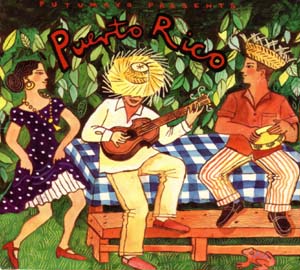|
CARIBBEAN MUSIC & Dance |
| Home | PUERTO RICO | CUBA | DOMINICAN REPUBLIC |
|
Puerto Rico is the smallest and easternmost island of the Greater Antilles.1 The island was originally inhabited by several different tribes if Amerindians, but the primary tribe being the Taínos. The Taínos, also found on the island of Hispaniola, were the most culturally advanced, having cultivated mot of the island. In 1492, the Spanish Crown granted Christopher Columbus the funds to explore the New World. In November 1493, Columbus and his crew landed on the island that the Taínos called El Borinquen. Columbus’ visit was short and the island remained untouched by the Spanish until Juan Ponce de Leon returned fifteen years later.2 Ponce de León established a good rapport with the Taínos. By gaining the trust of the natives, he gradually begins to use them as laborers. The Spanish Crown sees the benefits of the sugar cane and gold and demands one-fifth of the profits. As the demand for these products increased, life became intolerable for the workers. As a result of working under cruel conditions and under the harsh rule of the Spaniards, most Taínos were killed during the early stages of colonization.3 The demand for work steadily increased as the amount of workers diminished. To make up for the lose; the Spaniards began to import slaves from West Africa.4 “The mixing of the Indian, Spanish and African cultures generated an abundant source of stories, proverbs, songs, dances, and expressions which has been kept alive over the centuries."5 After the United States took Puerto Rico under its wing as a commonwealth after the Spanish-American war in 1898, many Puerto Ricans migrated to the mainland. The numbers became overwhelming in the mid-twentieth century. From 1940-1960 over 600,000 native-born Puerto Ricans migrated to the United States, bringing with them their food, music, language, and traditions to the barrios of East Harlem, South Bronx, and Jersey.6 While in the United States, Puerto Ricans faced everday instances of racism. As a cry for equal rights, the Independence of Puerto Rico, and control of their community, the Young Lords’ Party was formed. During this movement, music was used as a form of expression that reflected the times. While keeping a strong connection to their native music, La Bomba and La Plena, Puerto Ricans added Rock elements to La Plena, transforming it into the what we know now as Salsa. As Puerto Rican culture began to make its’ mark in the United States, it also began to blossom. "While U.S. Rock and Roll allowed us to differentiate ourselves generationally from our parents....the Latin music constantly invited all in the audience to partake in the pleasures of familiar rhythms, melodies, and intimate romantic ballads to which our parents and grandparents had also sung and danced to during their youth."7 |
|
|
